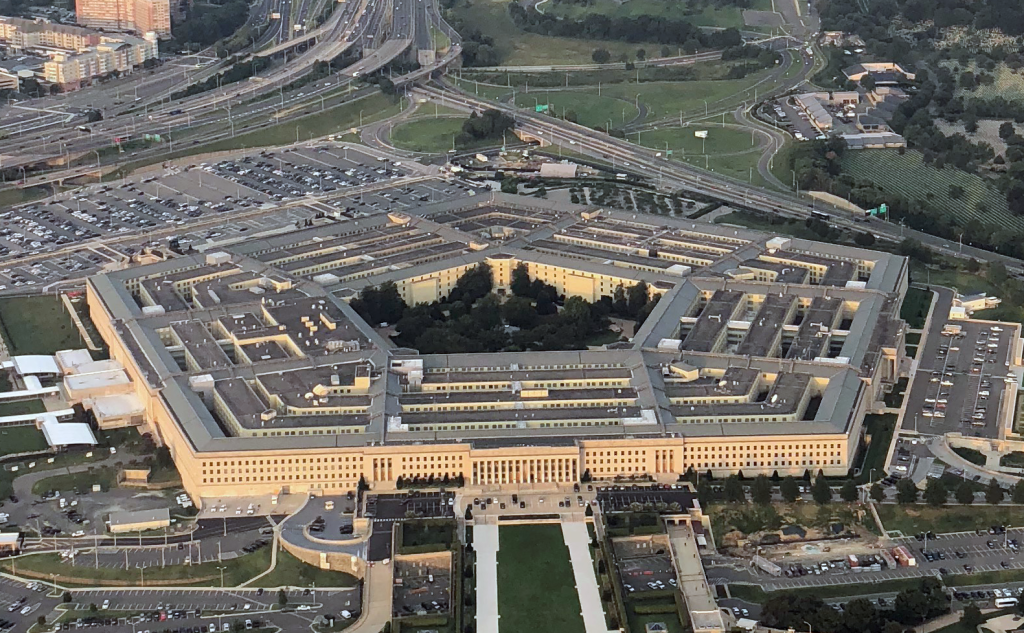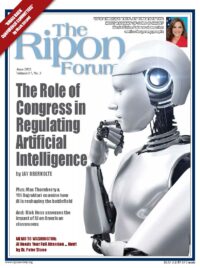
The world is in the midst of a technological revolution in warfighting driven by the widespread deployment of artificial intelligence. This revolution’s relentless advance is demonstrated daily in Ukraine where we see the power of a tech-savvy, creative, and adaptable population develop and speed a range of new technologies to the battlefield to turn back a brutal Russian military. Ukraine’s community of engineers have formed a software army able to tap into multiple data sources and digital platforms, ranging from commercial satellite imagery to smartphone apps used to track Russian movements, that are then combined with cutting-edge AI. Spurred by the existential threat posed by Russia’s invasion, the Ukrainian military is the first to operationalize algorithmic warfare at scale.
Data, advanced algorithms, computing power – these are the weapons that will determine the fight for information. And it’s a fight the U.S. must win. AI enables the ability to sense and see the battlefield, to rapidly respond to adversary moves, to get ahead of the adversary’s decision cycle, and enable faster decision-making and targeting. Ukraine has integrated AI into kill chains to spot hidden and camouflaged Russian vehicles and greatly accelerate the targeting cycle, which is critical when trying to strike mobile targets. In similar fashion, our ability to deter potential Chinese aggression against Taiwan requires that we demonstrate the ability to reach into a highly contested environment and locate, identify, and strike large numbers of mobile platforms – the aircraft and ships that would be part of a Chinese assault.
The Chinese Communist Party is obsessed with information in modern warfare and has unabashedly touted the military advantages of AI which it sees as central to moving from today’s “informationized” ways of warfighting to future “intelligentized” warfare.
For its part, the Chinese Communist Party is obsessed with information in modern warfare and has unabashedly touted the military advantages of AI which it sees as central to moving from today’s “informationized” ways of warfighting, to future “intelligentized” warfare. It is convinced that integrating AI into intelligent unmanned systems and in support of command decision-making will lead to disruptive battlefield advantages. It also intends to destroy an enemy’s information systems and decision-making processes which it views as the most important targets in information warfare. The PLA’s “Systems Destruction Warfare” concept aims to systematically target the linkages and nodes that connect an advanced networked force.
Closing the near-term deterrence gap with China will require the U.S. military to organize and equip itself to win the information fight. That means moving to an AI-enabled command and control architecture that facilitates faster and more precise decision-making and is smarter on day two of the fight after having learned, integrated, and deployed lessons from day one. That is one of the central findings of our recent report, Offset-X, that was released by the Special Competitive Studies Project (SCSP).
AI will enable commanders to better understand the real-time battlespace in ways that humans cannot by rapidly analyzing vast amounts of data. As sensors continue to proliferate on and above the battlefield, the amount of data flowing to command centers will steadily increase. Already, the ability to analyze this data – still largely done manually – is constrained. AI will increase the capacity and accuracy to analyze these multiplying incoming data streams.
As evidenced in Ukraine, future warfare will be characterized by agile forces, moving beyond simple networks to frameworks that employ AI to manage the actions of large numbers of human-machine teams. These will be small, smart, networked, updatable, inexpensive, and open architecture systems that fill a range of missions. These new frameworks will permit operators and machines to overcome challenges of complexity so that what was once a single thing becomes a team of things – to expand attack surfaces and absorb lethality. Manned-unmanned teams hold the potential to greatly increase combat power, layer defensive and offensive capability, and enable development of resilient, multi-path kill chains. The force that can best master this new style of highly distributed combat in a contested cyber and electronic warfare environment will gain significant advantages in a future fight.

While extolling the importance of AI, the Department of Defense has been slow to integrate AI. This will leave the Joint Force disadvantaged in any future information contest against a Chinese military relentlessly pursuing intelligentized warfare.
While extolling the importance of AI, the Department of Defense (DoD) has been slow to integrate AI. This will leave the Joint Force disadvantaged in any future information contest against a Chinese military relentlessly pursuing intelligentized warfare. Moreover, AI is moving fast with large language models and generative AI pushing new boundaries seemingly every day. Yet, DoD asked for only $1.8 billion for AI in the 2024 budget request. DoD must move with more urgency to integrate AI across operations.
To begin with, we recommend that the military Services and Combatant Commands empower tactical units to experiment with, develop, and deploy robust, reliable and resilient software for those capabilities that they operate. Development of software and data-centric capabilities requires continuous prototyping and experimentation while also making full use of commercial technology. This is where tech firms can provide needed engineering talent to help DoD become more software-centric.
Congress can help streamline and accelerate the Authorization to Operate (ATO) process, central to scaling software solutions and building new information architectures. The length, costs, and complexity of the process makes it exceedingly difficult for less-resourced commercial providers to deliver software to warfighters. Unless this process is made easier, faster, and more efficient, DoD will be unable to rapidly adapt to a changing technological environment, and warfighters will lack the cutting-edge software needed at the tactical edge.
Mac Thornberry served 26 years as a Member of Congress and served as Chairman of the House Armed Services Committee from 2015-2019. He continues to work at the intersection of technology and national security and serves as a board member of various companies and non-profit organizations, including the Special Competitive Studies Project. Ylli Bajraktari serves the President & CEO of the SCSP. He previously served as Executive Director of the National Security Commission on Artificial Intelligence. Prior to joining NSCAI, he served as Chief of Staff to National Security Advisor H.R. McMaster.




